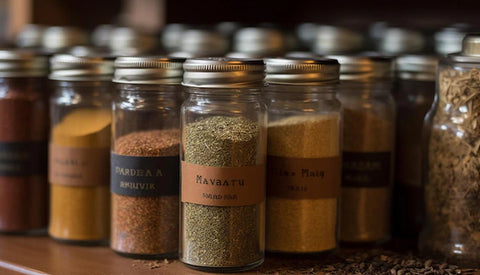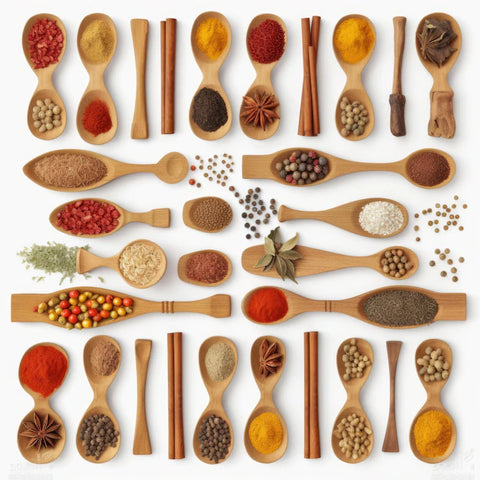What is the Target Market for Spices?

What is the market that spices are aimed at?
It is impossible to imagine a world without spices in food. Since the dawn of civilisation, spices have been instrumental in developing our diets and culinary traditions by converting common foods into delectable culinary pleasures. In the modern world, this desire has only risen. But who precisely makes up the market for spices?
Making Sense of the Spice Market
It's crucial to establish what a "spice" is before getting into the details. Generally speaking, spices are dried plant components with fragrant or spicy qualities. These might be seeds, bark, roots, berries, or even the buds of flowers.
What is the Target Market for Spices?

We must analyze the numerous customer categories and comprehend how spices fit into their daily routines, eating preferences, and health regimens in order to determine the target market for spices.
1. Domestic Chefs
An important customer group in the spice sector is home chefs. They are people who take pleasure in cooking at home, whether it is for nutrition, amusement, or the enjoyment of fine food. Spices are prized by home chefs because they can make ordinary dishes exceptional. This market includes people of diverse ages and socioeconomic backgrounds, from college students trying out their first dish to stay-at-home parents feeding their family every day.
2. Chefs and restaurateurs in the industry, What is the Target Market for Spices?
Another significant target market sector for spices is professional chefs and restaurateurs. To develop their own recipes and tastes, restaurants, cafés, catering services, and other food service businesses depend extensively on spices. Spices are crucial instruments for differentiating and capturing the preferences of their clients in this cutthroat industry.
BE SURE TO SUBSCRIBE TO OUR YOUTUBE CHANNEL OVER 1,000 FREE VIDEOS!
Marketing Food Online participates in various affiliate marketing programs, which means we may get paid commissions on editorially chosen products purchased through our links to retailer sites. Our Blogs are for informational purposes only seek legal advice if needed.
3. Advocates for health and wellness
The health advantages of spices have attracted more attention in recent years. For instance, cinnamon is well recognized for helping to control blood sugar levels, while turmeric is praised for its anti-inflammatory effects. A increasing portion of the spice market is made up of people who are interested in health and wellness, which might include people who are fitness-oriented, people who are coping with certain medical concerns, and those who want to live a more natural lifestyle.
Investigating Spice Industry Demand
In addition to individual consumers, a number of sectors substantially contribute to the need for spices. Spices are used in these sectors not only for their taste but also for their possible health advantages and as a preservative.

1. The Food and Beverage Sector
The biggest industry using spices is probably the food and beverage sector. Spices are essential in the creation of a wide range of items, including snacks, ready meals, drinks, canned goods, and sauces.
2. The Pharmaceutical Sector
Additionally, the pharmaceutical business has a significant role for spices. Many spices are employed in the creation of different medicines and health products since they are recognized to have medicinal characteristics.
3. Personal care and cosmetics industry
Many businesses include spices in their skincare and haircare products, and they have also found their way into the cosmetics and personal care market. Due of their potential advantages for skin health, spices like saffron and turmeric are frequently included in these products.
Geographical Markets
The intended market for spices spans the whole world geographically. Due to local culinary traditions and the impact of regional cuisine, certain areas, nonetheless, have more notable customers. Key markets include Asia, the Middle East, and North Africa, where cuisines from nations like India, China, and Morocco strongly depend on a variety of spices. A sizable market is also represented by Western nations including the USA, UK, and Canada, particularly given the rising popularity of experimenting with other cuisines.
What is the Target Market for Spices?
The Direction of the Spice Market
The demand for spices is anticipated to increase as consumers become more health aware and continue to experiment with different cuisines. The sector is facing new possibilities and difficulties as a result of the growing demand for organic and ethically produced spices.
The wide and varied market for spices includes not only individual customers with various lives and occupations but also a number of different sectors. Businesses may successfully plan to suit the changing tastes and preferences within this industry by understanding the intricate network of spice consumers. Spices play a crucial role in our lives, impacting our food and our welfare, whether one is a home chef looking to add flare to their meals, a restaurant looking to make exquisite dishes, or an individual seeking natural health remedies.
FAQ'S FOR STARTING A SPICE BUSINESS
15 Frequently Asked Questions (FAQs) about the market for spices are listed below:
What is a target market, exactly?
A target market is a certain segment of the population that a company hopes to attract with its goods or services.
Who are the major users in the market for spices?
A: Consumers interested in health and wellbeing as well as home cooks and chefs are major buyers of spices.
Why are spices crucial to the food and drink industry?
A: Due to their capacity to improve the taste, color, and scent of a broad variety of goods, spices are crucial in the food and beverage business.
How do spices become used in the pharmaceutical industry?
A: Due to their medicinal characteristics, spices are used by the pharmaceutical sector in the manufacturing of several medications and health supplements.
How are spices utilized in the personal care and cosmetics industry?
A: Because of their potential advantages for skin health, several spices, like saffron and turmeric, are utilized in the cosmetics business. Products for hair and skin care include them.
A: Do some geographical areas have a higher prevalence of spice consumption?
A: Due to the impact of regional cuisine, areas like Asia, the Middle East, and North Africa have significant consumer populations. With the tendency of experimenting with other cuisines, Western nations are also a sizable market.
Why are fans of health and wellbeing interested in spices?
A lot of spices are renowned for their medicinal properties. For instance, cinnamon is renowned for helping to control blood sugar levels, while turmeric is valued for its anti-inflammatory effects.
What are the primary applications of spices in domestic cooking?
A: Spices are used in home cooking to improve the taste, fragrance, and color of food. They are a common ingredient in many cuisines and may change simple dishes.
How do seasoned professionals utilize spices in their restaurants?
A: To produce distinctive tastes and characteristic meals, chefs and restaurateurs employ spices. In the very competitive restaurant sector, spices are essential for distinctiveness.
How does the spice market change depending on the age group?
A: Spice use is widespread throughout all age groups. However, older people could use more spices as a result of evolving palates, whilst younger people might be more open to trying out novel spices.
What is the forecast for the spice market?
A: The market for spices is anticipated to expand as consumers become more health-conscious and open to trying out new foods. The desire for spices that are grown organically and with integrity is also rising.
How can cultural factors impact the use of spices?
A: The use of spices is heavily influenced by cultural factors. There are traditional foods from many cultures that largely depend on the usage of various spices.
Why are spices from ethical and sustainable sources in demand?
A: Organic and ethically sourced goods, including spices, are becoming more popular. These goods are seen as being more sustainable and healthier.
What function do spices serve in the catering industry?
A: In the catering sector, spices are essential for developing menus with variety and producing meals that satisfy a broad range of palate preferences.
How has the spice business been affected by the internet?
A vast range of spices are now more readily available to people all around the globe thanks to the internet. Additionally, it has made it possible to share cooking methods and recipes, which has increased interest in and demand for certain spices.

